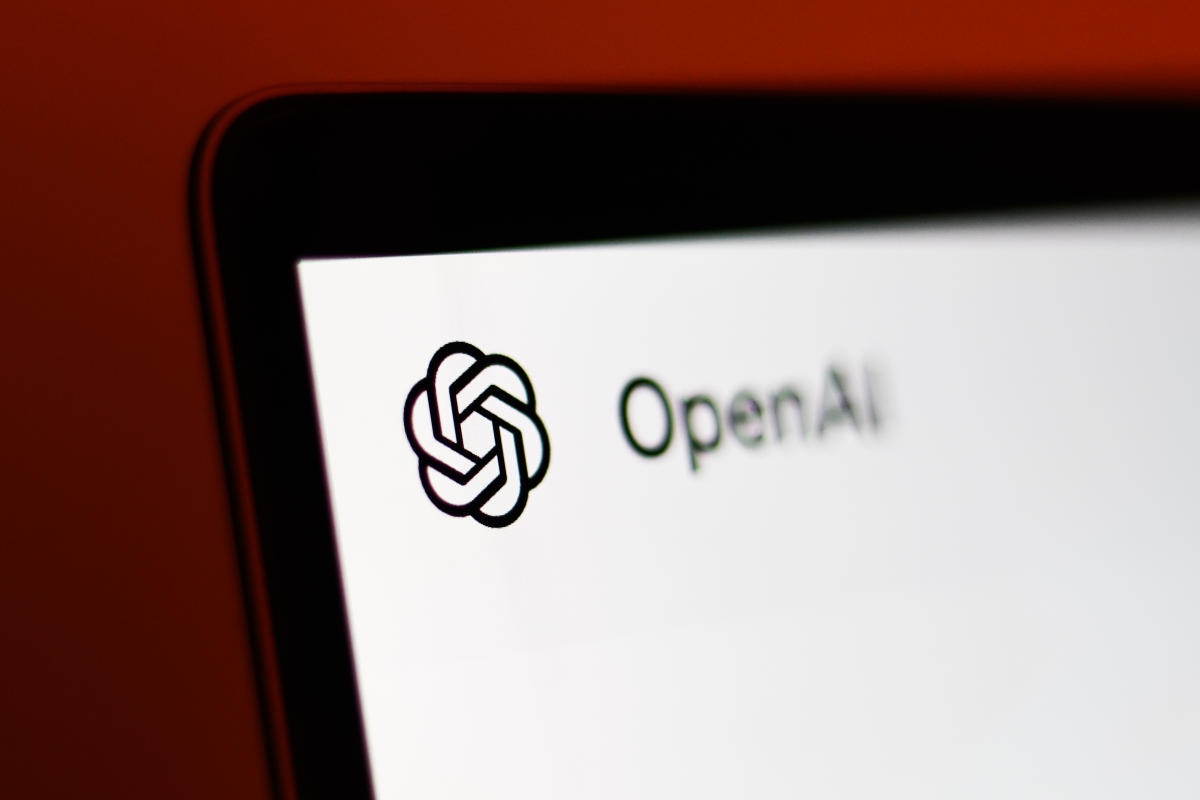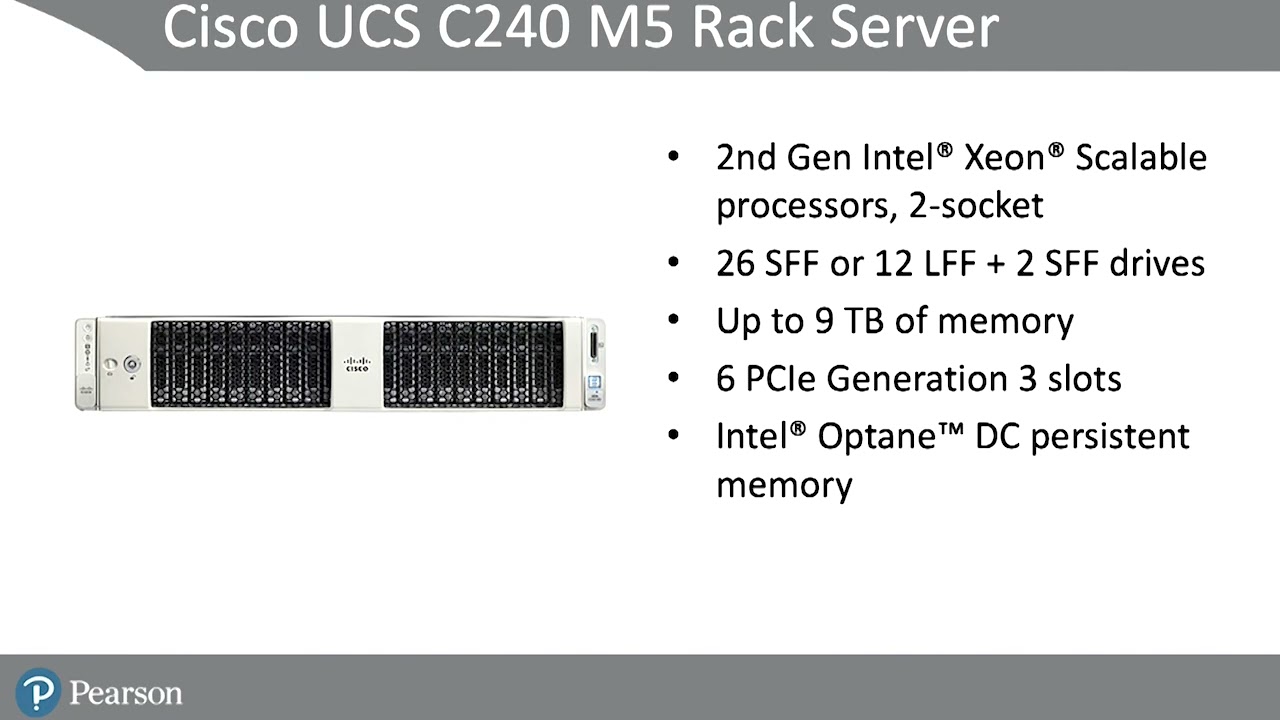Here’s the thing about asking investors for money: they want to see returns.
Technology
OpenAI was a research lab — now it’s just another tech company

OpenAI launched with a famously altruistic mission: to help humanity by developing artificial general intelligence. But along the way, it became one of the best-funded companies in Silicon Valley. Now, the tension between those two facts is coming to a head.
Weeks after releasing a new model it claims can “reason,” OpenAI is barreling toward dropping its nonprofit status, some of its most senior employees are leaving, and CEO Sam Altman — who was once briefly ousted over apparent trust concerns — is solidifying his position as one of the most powerful people in tech.
On Wednesday, OpenAI’s longtime chief technology officer, Mira Murati, announced she’s leaving “to create the time and space to do my own exploration.” The same day, chief research officer Bob McGrew and VP of post training Barret Zoph said they would depart as well. Altman called the leadership changes “a natural part of companies” in an X post following Murati’s announcement.
“I obviously won’t pretend it’s natural for this one to be so abrupt, but we are not a normal company,” Altman wrote.
But it follows a trend of departures that’s been building over the past year, following the failed attempt by the board to fire Altman. OpenAI cofounder and chief scientist Ilya Sutskever, who delivered Altman the news of his firing before publicly walking back his criticism, left OpenAI in May. Jan Leike, a key OpenAI researcher, quit just days later, saying that “safety culture and processes have taken a backseat to shiny products.” Nearly all OpenAI board members at the time of the ouster, except Quora CEO Adam D’Angelo, have resigned, and Altman secured a seat.
The company that once fired Altman for being “not consistently candid in his communication” has since been reshaped by him.
No longer just a “donation”
OpenAI started as a nonprofit lab and later grew a for-profit subsidiary, OpenAI LP. The for-profit arm can raise funds to build artificial general intelligence (AGI), but the nonprofit’s mission is to ensure AGI benefits humanity.
In a bright pink box on a webpage about OpenAI’s board structure, the company emphasizes that “it would be wise” to view any investment in OpenAI “in the spirit of a donation” and that investors could “not see any return.”
Investor profits are capped at 100x, with excess returns supporting the nonprofit to prioritize societal benefits over financial gain. And if the for-profit side strays from that mission, the nonprofit side can intervene.
We’re way past the “spirit of a donation” here
Reports claim OpenAI is now approaching a $150 billion valuation — about 37.5 times its reported revenue — with no path toward profitability in sight. It’s looking to raise funds from the likes of Thrive, Apple, and an investment firm backed by the United Arab Emirates, with a minimum investment of a quarter-million dollars.
OpenAI doesn’t have deep pockets or existing established businesses like Google or Meta, which are both building competing models (though it’s worth noting that these are public companies with their own responsibilities to Wall Street.) Fellow AI startup Anthropic, which was founded by former OpenAI researchers, is nipping at OpenAI’s heels while looking to raise new funds at a $40 billion valuation. We’re way past the “spirit of a donation” here.
OpenAI’s “for-profit managed by a non-profit” structure puts it at a moneygrubbing disadvantage. So it made perfect sense that Altman told employees earlier this month that OpenAI would restructure as a for-profit company next year. This week, Bloomberg reported that the company is considering becoming a public benefit corporation (like Anthropic) and that investors are planning to give Altman a 7 percent stake. (Altman almost immediately denied this in a staff meeting, calling it “ludicrous.”)
And crucially, in the course of these changes, OpenAI’s nonprofit parent would reportedly lose control. Only a few weeks after this news was reported, Murati and company were out.
Both Altman and Murati claim that the timing is only coincidental and that the CTO is just looking to leave while the company is on the “upswing.” Murati (through representatives) declined to speak to The Verge about the sudden move. Wojciech Zaremba, one of the last remaining OpenAI cofounders, compared the departures to “the hardships parents faced in the Middle Ages when 6 out of 8 children would die.”
Whatever the reason, this marks an almost total turnover of OpenAI leadership since last year. Besides Altman himself, the last remaining member seen on a September 2023 Wired cover is president and cofounder Greg Brockman, who backed Altman during the coup. But even he’s been on a personal leave of absence since August and isn’t expected to return until next year. The same month he took leave, another cofounder and key leader, John Schulman, left to work for Anthropic.
When reached for comment, OpenAI spokesperson Lindsay McCallum Rémy pointed The Verge to previous comments made to CNBC.
And no longer just a “research lab”
As Leike hinted at with his goodbye message to OpenAI about “shiny products,” turning the research lab into a for-profit company puts many of its long-term employees in an awkward spot. Many likely joined to focus on AI research, not to build and sell products. And while OpenAI is still a nonprofit, it’s not hard to guess how a profit-focused version would work.
Research labs work on longer timelines than companies chasing revenue. They can delay product releases when necessary, with less pressure to launch quickly and scale up. Perhaps most importantly, they can be more conservative about safety.
There’s already evidence OpenAI is focusing on fast launches over cautious ones: a source told The Washington Post in July that the company threw a launch party for GPT-4o “prior to knowing if it was safe to launch.” The Wall Street Journal reported on Friday that the safety staffers worked 20-hour days and didn’t have time to double-check their work. The initial results of tests showed GPT-4o wasn’t safe enough to deploy, but it was deployed anyway.
Meanwhile, OpenAI researchers are continuing to work on building what they consider to be the next steps toward human-level artificial intelligence. o1, OpenAI’s first “reasoning” model, is the beginning of a new series that the company hopes will power intelligent automated “agents.” The company is consistently rolling out features just ahead of competitors — this week, it launched Advanced Voice Mode for all users just days before Meta announced a similar product at Connect.
So, what is OpenAI becoming? All signs point to a conventional tech company under the control of one powerful executive — exactly the structure it was built to avoid.
“I think this will be hopefully a great transition for everyone involved and I hope OpenAI will be stronger for it, as we are for all of our transitions,” Altman said onstage at Italian Tech Week just after Murati’s departure was announced.
Technology
The best shows on Amazon Prime Video right now (October 2024)


Amazon Prime Video has its share of good and bad originals. The streaming service also offers access to plenty of legacy network shows with a base Amazon Prime subscription (or standalone Amazon Prime Video subscription). Shows removed from the service aren’t necessarily lackluster. Amazon recently canceled well-reviewed shows The Horrors of Dolores Roach and With Love, presumably because of low viewership numbers, though no specific reason was given. Amazon also axed My Lady Jane, a quirky alternate-history story that critics and audiences loved.
If you’re looking for the best shows on Amazon Prime Video right now, whether they’re ones with multiple seasons or shows that were cut short after just one or two, we have you covered. While there’s so much coming out right now for the fall, these shows are worth adding to your watch list if you haven’t seen them.
Looking for something else? We’ve also rounded up the best new shows to stream, the best shows on Netflix, the best movies on Hulu, the best movies on Amazon Prime Video, and the best movies on Disney+.
Technology
Meta is selling a $40 ‘open facial interface’ accessory for Quest 3

Meta is offering a $40 accessory for the Meta Quest 3 headset. The “open facial interface” for the Meta Quest 3 opens up the peripheral vision of the wearer.
Meta Quest 3 “open facial interface” is now available for just $40
The Meta Connect 2024 conference was a feature-packed event. Meta’s CEO not only announced the Orion Augmented Reality (AR) holographic display but also the aggressively priced Quest 3S.
One of the products that made its way to the launchpad was the “open facial interface” for the Quest 3 Virtual Reality (VR) headset. According to Android Central, this $40 accessory is trying to fill the gap left by the Meta Quest Pro, which is set to be discontinued.
Meta has announced it has begun selling the new accessory. It is up for pre-order on Meta’s e-store. The earliest estimated shipping date for early adopters is mid-October.
The new accessory is lighter and adds another way to wear the VR headset
The social media giant assures the open facial interface offers an open-periphery experience similar to that of the Meta Quest Pro. Interestingly, when the Quest Pro is no longer officially available, the Quest 3 (with the open facial interface) will be the only official way to use a Meta VR headset with open sides.
The open facial interface is only compatible with the Quest 3, not the new Quest 3S. The Quest 3S has a “breathable facial interface”. But it is certainly no match for the open facial interface. Some reports suggest this accessory could create an illusion of a wider field of view.
Finally it’s available for pre-order.
The Pro feeling is coming to Meta Quest 3!”Meta Quest 3 open facial interface”
Now just wait for pre order shipment… #VR #Meta #Quest #Open #Facial #Interface #Pro pic.twitter.com/jlHhXt61b8
— R347ITY (@R347ITY) September 25, 2024
The open facial interface would surely help with the lens fogging issue. By creating a gap between the user’s head and the headset, this accessory also opens access to the wearer’s surroundings.
With this accessory, Meta is now offering a new way to use the Quest 3 VR headset. The default interface that comes in the box is meant for everyday use. The silicone facial interface, sold separately for $40, is intended to be worn during workout sessions and games involving a lot of movement.
Meta claims the open facial interface is “best for spatial experiences”. Interestingly, weighing just 60 grams, this accessory is lighter than the other two. This means using this accessory could subtly lighten the load of the VR headset.
Servers computers
67 9 2 Overview of UCS C Series Rack Servers
Technology
OpenAI reportedly plans to increase ChatGPT’s price to $44 within five years

OpenAI is reportedly telling investors that it plans on charging $22 a month to use ChatGPT by the end of the year. The company also plans to aggressively increase the monthly price over the next five years up to $44.
The documents obtained by shows that OpenAI took in $300 million in revenue this August, and expects to make $3.7 billion in sales by the end of the year. Various expenses such as salaries, rent and operational costs will cause the company to lose $5 billion this year.
OpenAI is reportedly circulating the documents the NYT reported on as part of a drive to find new investors to prevent or lessen its financial shortfall. Fortunately, OpenAI is raising money on a $150 billion valuation, and a new round of investments could bring in as much as $7 billion.
OpenAI is also reportedly in the midst of switching from . The business model allows for the removal of any caps on investor returns so they’ll have more room to negotiate for new investors at possibly higher rates.
Servers computers
Dell PowerEdge 1950 Rack Server – Overview, Specifications, Benefits & Uses

Buy Refurbished Dell PowerEdge 1950 Server – https://www.serverbasket.com/shop/refurbished-dell-poweredge-1950-server/
For Information on Dell PowerEdge 1950 Rack Server,Contact Us at:
Website: https://www.serverbasket.com
Email: sales@serverbasket.com
Toll-Free No: 1800 123 1346
WhatsApp: +91 8886001858
————————————————————————————————————————————————————
Subscribe To Our Channel @ https://www.youtube.com/channel/UCO8bZFM0NzVsjG7Ss83LvOQ
————————————————————————————————————————————————————
Check out the Powerful Dell PowerEdge 1950 Rack Server.
Buy Refurbished Dell PowerEdge 1950 Rack Server from Server Basket as it is Optimal for Growing SME & Demanding Businesses. With High Memory Capacity & Huge Storage Ability, Dell 1950 server is Ideal for Tech Startups & Booming SME Businesses.
Key Benefits:
– Hight Performance
– High Density
– Expandable Storage
– Energy Efficiency
– Enhance Performance
– Expandable Storage
– Streamlined Virtualization
– Power Redundancy
– Easy To Use
– Best Price in Market
– Sturdy Design
– Instant Delivery
– Quick Support
————————————————————————————————————————————————————
Dell PowerEdge 1950 Rack Server Specifications:
CPU Capacity:
– Supports 2 Processors
– Intel® Xeon® 5400,5200,or 5100 processor Series
– Single CPU = 4 Cores Max
– Quad CPU = 8 Cores Max
– Max VCPUs: 12 VCPUs
RAM Capacity:
– Inbuilt 8 DIMM Slots
– 8 GB Max Memory Per DIMM Slot
– 64 GB Maximum Memory Capacity
– Supported Technology: DDR2 Memory
– RAM Speed: 667 MHz
Storage Capacity:
-2 x 3.5” SAS (10K/15K)or SATA (7.2K) drives
-4 x 2.5” SAS (10K) drives
-Max potential Storage: 1.5 TB
Raid Controller :
-PERC integrated SAS/SATA
Power Supply:
-670W, optional hot-plug redundant power (1+1)
Operating System:
-Microsoft® Windows® Server
-Microsoft® Windows® Storage Server
-Red Hat® Linux® Enterprise
-Novell® Netware®
-Novell® SUSE Linux
Embedded Hypervisor-
-VMware ESXi 3.5
-Citrix® XenServer Dell Express Edition
-Citrix® XenServer Dell Enterprise Edition
Systems management:
-Dell OpenManage
Remote management:
-Baseboard Management Controller with IMPI 2.0 support;
-DRAC5 (advanced capabilities)
————————————————————————————————————————————————————
Check out the Powerful Dell PowerEdge 1950 III Rack Serve from Server Basket.
#ServerBasket #BuyDellServer #BuyServerinIndia #Dell1950server #BuyDellPowerEdge1950Server #Dell_PowerEdge_1950_Server #ServerBasket .
source
Technology
AI dominated both YC Demo Day and startup news

Welcome to Startups Weekly — your weekly recap of everything you can’t miss from the world of startups. Want it in your inbox every Friday? Sign up here.
This week was a busy one for the startup and VC world, with its fair share of funding news and, of course, the latest edition of YC’s Demo Day.
Most interesting startup stories from the week

Yes, AI, AI, AI. But it’s more eventful than it sounds.
Departures: Several key people are leaving OpenAI — CTO Mira Murati, as well as the company’s chief research officer and a research VP. There’s more context than we can sum up here, so go have a read if you are so inclined.
Ive mind: It is now confirmed that former Apple designer Jony Ive is working on an AI device startup with OpenAI and its CEO Sam Altman. The unnamed venture could be seeking to raise up to $1 billion by the end of the year.
AltGPT: Letta, an AI startup founded by the researchers behind MemGPT and positioning itself as “the open alternative to OpenAI,” has come out of stealth to much anticipation.
Pipelines: Data startup Airbyte launched Airbyte 1.0 with a focus on AI use cases. It also made its self-managed enterprise service generally available.
Most interesting fundraises this week

COVID-19 almost killed some companies and boosted others. Now companies from both groups are finding their footing, and other trends are getting confirmed.
Working out: German connected fitness startup EGYM closed a $200 million Series G round of funding that confirms investor interest in the broader trend of preventative healthcare.
Digital transformation: Whatfix, a San Jose-based company whose platform demonstrates how to use third-party software, raised a $125 million Series E round led by Warburg Pincus.
AI power: Open source developer platform Supabase raised an $80 million Series C round. The company now positions itself as Postgres-centric and has been enjoying AI tailwinds; 10% of active databases on the service power AI use cases.
Beaming: Marvel Fusion raised €62.8 million in a Series B round to work on making commercial fusion power a reality thanks to lasers.
In the spotlight: British startup Raycast raised $30 million to bring its Mac productivity app to Windows and iOS, with a focus on “prosumer” users.
Most interesting VC and fund news this week

Exit time: Peak XV Partners, the largest India and Southeast Asia-focused VC fund, realized about $1.2 billion in exits since its split from Sequoia last year, TechCrunch learned from sources.
Skyrocketing: European defense tech will attract $1 billion in VC funding this year, according to a new Dealroom report. This significant increase compared to previous years also goes along rising interest for dual-use technologies.
Sailing: Spanish VC firm All Iron Ventures rebranded as Acurio Ventures and closed a third fund of $166 million that will exclusively make “follow-on” investments.
Last but not least

Taking place on September 25 and 26, Y Combinator’s online Demo Day for its Summer 2024 batch was once again dominated by AI use cases, some particularly exciting. The format itself is changing: Going forward, there will be four Demo Days a year, and YC CEO Garry Tan said that the next one on December 4 will include an in-person element.
-

 Womens Workouts4 days ago
Womens Workouts4 days ago3 Day Full Body Women’s Dumbbell Only Workout
-

 News5 days ago
News5 days agoOur millionaire neighbour blocks us from using public footpath & screams at us in street.. it’s like living in a WARZONE – WordupNews
-

 Technology1 week ago
Technology1 week agoWould-be reality TV contestants ‘not looking real’
-

 News1 week ago
News1 week agoYou’re a Hypocrite, And So Am I
-

 Science & Environment1 week ago
Science & Environment1 week agoHyperelastic gel is one of the stretchiest materials known to science
-

 Science & Environment1 week ago
Science & Environment1 week ago‘Running of the bulls’ festival crowds move like charged particles
-

 Sport1 week ago
Sport1 week agoJoshua vs Dubois: Chris Eubank Jr says ‘AJ’ could beat Tyson Fury and any other heavyweight in the world
-

 Science & Environment1 week ago
Science & Environment1 week agoITER: Is the world’s biggest fusion experiment dead after new delay to 2035?
-

 Science & Environment1 week ago
Science & Environment1 week agoMaxwell’s demon charges quantum batteries inside of a quantum computer
-

 Science & Environment1 week ago
Science & Environment1 week agoHow to wrap your mind around the real multiverse
-

 Science & Environment1 week ago
Science & Environment1 week agoSunlight-trapping device can generate temperatures over 1000°C
-

 Science & Environment1 week ago
Science & Environment1 week agoLiquid crystals could improve quantum communication devices
-

 Science & Environment1 week ago
Science & Environment1 week agoPhysicists are grappling with their own reproducibility crisis
-

 Science & Environment1 week ago
Science & Environment1 week agoHow to unsnarl a tangle of threads, according to physics
-

 Science & Environment1 week ago
Science & Environment1 week agoQuantum ‘supersolid’ matter stirred using magnets
-

 CryptoCurrency1 week ago
CryptoCurrency1 week agoCardano founder to meet Argentina president Javier Milei
-

 Science & Environment1 week ago
Science & Environment1 week agoCaroline Ellison aims to duck prison sentence for role in FTX collapse
-

 Science & Environment1 week ago
Science & Environment1 week agoWhy this is a golden age for life to thrive across the universe
-

 News1 week ago
News1 week agoIsrael strikes Lebanese targets as Hizbollah chief warns of ‘red lines’ crossed
-

 Womens Workouts7 days ago
Womens Workouts7 days agoBest Exercises if You Want to Build a Great Physique
-

 Science & Environment1 week ago
Science & Environment1 week agoQuantum forces used to automatically assemble tiny device
-

 CryptoCurrency1 week ago
CryptoCurrency1 week agoDZ Bank partners with Boerse Stuttgart for crypto trading
-

 CryptoCurrency1 week ago
CryptoCurrency1 week agoEthereum is a 'contrarian bet' into 2025, says Bitwise exec
-

 Womens Workouts7 days ago
Womens Workouts7 days agoEverything a Beginner Needs to Know About Squatting
-

 Science & Environment5 days ago
Science & Environment5 days agoMeet the world's first female male model | 7.30
-

 Science & Environment1 week ago
Science & Environment1 week agoNuclear fusion experiment overcomes two key operating hurdles
-

 CryptoCurrency1 week ago
CryptoCurrency1 week agoBitcoin miners steamrolled after electricity thefts, exchange ‘closure’ scam: Asia Express
-

 CryptoCurrency1 week ago
CryptoCurrency1 week agoDorsey’s ‘marketplace of algorithms’ could fix social media… so why hasn’t it?
-

 CryptoCurrency1 week ago
CryptoCurrency1 week agoRedStone integrates first oracle price feeds on TON blockchain
-

 CryptoCurrency1 week ago
CryptoCurrency1 week agoBitcoin bulls target $64K BTC price hurdle as US stocks eye new record
-

 News1 week ago
News1 week agoBrian Tyree Henry on voicing young Megatron, his love for villain roles
-

 CryptoCurrency1 week ago
CryptoCurrency1 week agoCoinbase’s cbBTC surges to third-largest wrapped BTC token in just one week
-

 News5 days ago
News5 days agoFour dead & 18 injured in horror mass shooting with victims ‘caught in crossfire’ as cops hunt multiple gunmen
-

 Womens Workouts4 days ago
Womens Workouts4 days ago3 Day Full Body Toning Workout for Women
-

 Science & Environment1 week ago
Science & Environment1 week agoNerve fibres in the brain could generate quantum entanglement
-

 Science & Environment1 week ago
Science & Environment1 week agoTime travel sci-fi novel is a rip-roaringly good thought experiment
-

 Science & Environment1 week ago
Science & Environment1 week agoLaser helps turn an electron into a coil of mass and charge
-

 Science & Environment1 week ago
Science & Environment1 week agoQuantum time travel: The experiment to ‘send a particle into the past’
-

 CryptoCurrency1 week ago
CryptoCurrency1 week agoCrypto scammers orchestrate massive hack on X but barely made $8K
-

 CryptoCurrency1 week ago
CryptoCurrency1 week agoLow users, sex predators kill Korean metaverses, 3AC sues Terra: Asia Express
-

 CryptoCurrency1 week ago
CryptoCurrency1 week ago‘No matter how bad it gets, there’s a lot going on with NFTs’: 24 Hours of Art, NFT Creator
-

 CryptoCurrency1 week ago
CryptoCurrency1 week agoSEC asks court for four months to produce documents for Coinbase
-

 Sport1 week ago
Sport1 week agoUFC Edmonton fight card revealed, including Brandon Moreno vs. Amir Albazi headliner
-

 CryptoCurrency1 week ago
CryptoCurrency1 week agoBlockdaemon mulls 2026 IPO: Report
-
Business1 week ago
How Labour donor’s largesse tarnished government’s squeaky clean image
-

 Technology1 week ago
Technology1 week agoiPhone 15 Pro Max Camera Review: Depth and Reach
-

 News1 week ago
News1 week agoBrian Tyree Henry on voicing young Megatron, his love for villain roles
-

 Womens Workouts1 week ago
Womens Workouts1 week agoKeep Your Goals on Track This Season
-

 Travel4 days ago
Travel4 days agoDelta signs codeshare agreement with SAS
-

 News1 week ago
News1 week ago▶️ Media Bias: How They Spin Attack on Hezbollah and Ignore the Reality
-

 Science & Environment1 week ago
Science & Environment1 week agoWhy we need to invoke philosophy to judge bizarre concepts in science
-

 Science & Environment1 week ago
Science & Environment1 week agoHow do you recycle a nuclear fusion reactor? We’re about to find out
-

 News1 week ago
News1 week agoChurch same-sex split affecting bishop appointments
-

 Science & Environment1 week ago
Science & Environment1 week agoTiny magnet could help measure gravity on the quantum scale
-

 Technology1 week ago
Technology1 week agoFivetran targets data security by adding Hybrid Deployment
-

 CryptoCurrency1 week ago
CryptoCurrency1 week ago$12.1M fraud suspect with ‘new face’ arrested, crypto scam boiler rooms busted: Asia Express
-

 CryptoCurrency1 week ago
CryptoCurrency1 week agoDecentraland X account hacked, phishing scam targets MANA airdrop
-

 CryptoCurrency1 week ago
CryptoCurrency1 week agoCertiK Ventures discloses $45M investment plan to boost Web3
-

 CryptoCurrency1 week ago
CryptoCurrency1 week agoBeat crypto airdrop bots, Illuvium’s new features coming, PGA Tour Rise: Web3 Gamer
-

 CryptoCurrency1 week ago
CryptoCurrency1 week agoTelegram bot Banana Gun’s users drained of over $1.9M
-

 CryptoCurrency1 week ago
CryptoCurrency1 week ago‘Silly’ to shade Ethereum, the ‘Microsoft of blockchains’ — Bitwise exec
-
Business1 week ago
Thames Water seeks extension on debt terms to avoid renationalisation
-
Politics1 week ago
‘Appalling’ rows over Sue Gray must stop, senior ministers say | Sue Gray
-

 Womens Workouts1 week ago
Womens Workouts1 week agoHow Heat Affects Your Body During Exercise
-

 News5 days ago
News5 days agoWhy Is Everyone Excited About These Smart Insoles?
-

 Politics1 week ago
Politics1 week agoTrump says he will meet with Indian Prime Minister Narendra Modi next week
-

 Technology1 week ago
Technology1 week agoCan technology fix the ‘broken’ concert ticketing system?
-

 Health & fitness1 week ago
Health & fitness1 week agoThe secret to a six pack – and how to keep your washboard abs in 2022
-

 Science & Environment1 week ago
Science & Environment1 week agoBeing in two places at once could make a quantum battery charge faster
-

 Science & Environment1 week ago
Science & Environment1 week agoA new kind of experiment at the Large Hadron Collider could unravel quantum reality
-

 Science & Environment1 week ago
Science & Environment1 week agoHow one theory ties together everything we know about the universe
-

 Science & Environment1 week ago
Science & Environment1 week agoUK spurns European invitation to join ITER nuclear fusion project
-

 CryptoCurrency1 week ago
CryptoCurrency1 week ago2 auditors miss $27M Penpie flaw, Pythia’s ‘claim rewards’ bug: Crypto-Sec
-

 CryptoCurrency1 week ago
CryptoCurrency1 week agoLouisiana takes first crypto payment over Bitcoin Lightning
-

 CryptoCurrency1 week ago
CryptoCurrency1 week agoJourneys: Robby Yung on Animoca’s Web3 investments, TON and the Mocaverse
-

 CryptoCurrency1 week ago
CryptoCurrency1 week ago‘Everything feels like it’s going to shit’: Peter McCormack reveals new podcast
-

 CryptoCurrency1 week ago
CryptoCurrency1 week agoSEC sues ‘fake’ crypto exchanges in first action on pig butchering scams
-

 CryptoCurrency1 week ago
CryptoCurrency1 week agoBitcoin price hits $62.6K as Fed 'crisis' move sparks US stocks warning
-

 CryptoCurrency1 week ago
CryptoCurrency1 week agoVonMises bought 60 CryptoPunks in a month before the price spiked: NFT Collector
-

 CryptoCurrency1 week ago
CryptoCurrency1 week agoVitalik tells Ethereum L2s ‘Stage 1 or GTFO’ — Who makes the cut?
-

 CryptoCurrency1 week ago
CryptoCurrency1 week agoEthereum falls to new 42-month low vs. Bitcoin — Bottom or more pain ahead?
-

 News1 week ago
News1 week agoBrian Tyree Henry on his love for playing villains ahead of “Transformers One” release
-

 Womens Workouts1 week ago
Womens Workouts1 week agoWhich Squat Load Position is Right For You?
-

 News7 days ago
News7 days agoBangladesh Holds the World Accountable to Secure Climate Justice
-

 Health & fitness1 week ago
Health & fitness1 week agoThe maps that could hold the secret to curing cancer
-

 Science & Environment1 week ago
Science & Environment1 week agoSingle atoms captured morphing into quantum waves in startling image
-

 Science & Environment1 week ago
Science & Environment1 week agoHow Peter Higgs revealed the forces that hold the universe together
-

 Science & Environment1 week ago
Science & Environment1 week agoFuture of fusion: How the UK’s JET reactor paved the way for ITER
-

 CryptoCurrency1 week ago
CryptoCurrency1 week agoHelp! My parents are addicted to Pi Network crypto tapper
-

 CryptoCurrency1 week ago
CryptoCurrency1 week agoCZ and Binance face new lawsuit, RFK Jr suspends campaign, and more: Hodler’s Digest Aug. 18 – 24
-

 Fashion Models1 week ago
Fashion Models1 week agoMixte
-

 Politics1 week ago
Politics1 week agoLabour MP urges UK government to nationalise Grangemouth refinery
-

 Money1 week ago
Money1 week agoBritain’s ultra-wealthy exit ahead of proposed non-dom tax changes
-

 Womens Workouts1 week ago
Womens Workouts1 week agoWhere is the Science Today?
-

 Womens Workouts1 week ago
Womens Workouts1 week agoSwimming into Your Fitness Routine
-

 News2 weeks ago
News2 weeks agoBrain changes during pregnancy revealed in detailed map
-

 Science & Environment1 week ago
Science & Environment1 week agoA slight curve helps rocks make the biggest splash
-

 News1 week ago
News1 week agoRoad rage suspects in custody after gunshots, drivers ramming vehicles near Boise
-

 Science & Environment1 week ago
Science & Environment1 week agoA tale of two mysteries: ghostly neutrinos and the proton decay puzzle
-

 News2 weeks ago
News2 weeks agoToolkit to help journalists overcome ‘unspoken power dynamic’ in sensitive interviews


You must be logged in to post a comment Login